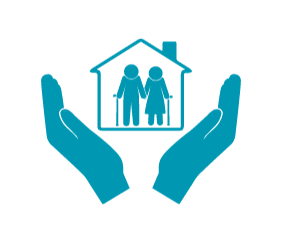As you or your loved ones age, it becomes crucial to address the potential safety concerns that may arise. Understanding the most common safety problems among older adults can help you create an environment that promotes independence while minimizing risks. From fall-related injuries to medication mismanagement, this article will explore the top safety concerns that older adults face and provide practical tips to enhance their overall safety and well-being. So, let’s take a closer look at these potential challenges and discover effective strategies to ensure a secure and comfortable environment for older adults.
Falls
Falls are a significant concern among older adults, as they can lead to severe injuries, loss of mobility, and a decrease in overall well-being. There are several risk factors for falls that individuals should be aware of. Some common risk factors include impaired balance and coordination, muscle weakness, vision problems, chronic health conditions, and certain medications. By understanding these risk factors, you can take steps to prevent falls and protect yourself or your loved ones.
Preventing falls is a crucial aspect of maintaining safety for older adults. There are various strategies you can implement to reduce the risk of falls. Regular exercise, particularly strength and balance training, can help improve muscle strength and stability. Removing tripping hazards around the home, such as loose rugs or cluttered pathways, can also greatly reduce the risk of falls. It is essential to ensure that your living environment is well-lit, as inadequate lighting can contribute to falls. Installing handrails or grab bars in the bathrooms and other areas can provide additional support and stability. Regular vision and hearing check-ups are also important to address any impairments that may increase the risk of falls.
Injury from falls can have severe consequences for older adults. Fractures, especially hip fractures, are common injuries resulting from falls. These injuries can significantly impact an individual’s quality of life and independence. In some cases, a fall can lead to prolonged hospitalization or the need for long-term care. To mitigate the risk of injury from falls, it is crucial to take steps to prevent falls and create a safe environment. Being proactive about fall prevention can help older adults maintain their mobility and independence for as long as possible.
Medication management
Medication management is another critical aspect of safety for older adults. Polypharmacy, the use of multiple medications, can increase the risk of adverse drug events, drug interactions, and medication errors. It is essential to have a comprehensive understanding of all the medications you or your loved one is taking. Keeping an updated medication list that includes dosage information and any specific instructions can help you stay organized and informed.
Adverse drug events, such as drug allergies or side effects, can have significant implications for older adults. It is crucial to closely monitor the effects of medications and report any concerning symptoms to healthcare professionals promptly. Additionally, medication organization and reminders can be helpful in ensuring medication adherence and reducing the risk of errors. Daily pill organizers and medication reminder apps can assist in keeping track of medications and dosages.
Home safety hazards
Keeping the home environment safe is vital for older adults’ well-being. Tripping hazards, such as loose rugs, cluttered pathways, or uneven flooring, can increase the risk of falls. Removing or securing these hazards can significantly reduce the likelihood of accidents. It is also important to be mindful of potential fire hazards in the home. Checking smoke detectors regularly and ensuring that there are no potential fire risks, such as unattended candles or overloaded electrical outlets, can help prevent fires.
Inadequate lighting can contribute to falls and accidents. Ensuring that all areas of the home are well-lit, including stairways and outdoor pathways, is crucial for maintaining safety. Installing additional lighting fixtures or using motion-sensor lights can help improve visibility and reduce the risk of accidents, particularly at night.
Driving safety
As we age, certain physical changes and cognitive decline can affect our ability to drive safely. Diminished vision and hearing can make it challenging to perceive and react to traffic conditions effectively. Slower reaction times, decreased strength, and flexibility can also impact driving abilities. Difficulty with traffic rules or changes in road conditions can further compromise driving safety.
Regular vision and hearing check-ups are essential to address any impairments that may affect driving abilities. It is important to be honest with yourself or your loved one about any difficulties or discomfort experienced while driving. Alternatively, there are various transportation alternatives available that can help older adults maintain their independence while ensuring their safety. Exploring options such as ride-sharing services, public transportation, or community transportation programs can provide safe alternatives to driving.
Financial exploitation
Older adults are often targeted by scams, identity theft, and predatory financial practices. It is important to be aware of these risks and take steps to protect yourself or your loved ones from financial exploitation. Scams targeting older adults can come in various forms, such as fraudulent phone calls, emails, or door-to-door solicitations. Being vigilant and cautious when sharing personal information or making financial decisions is crucial.
Identity theft can have devastating consequences for individuals of any age, but older adults may be particularly vulnerable. It is important to keep personal information, such as social security numbers and financial account details, secure. Utilizing strong, unique passwords for online accounts and regularly monitoring credit reports can help detect any suspicious activity and prevent identity theft.
Predatory financial practices, such as undue influence or coercion, can also put older adults at risk. It is important to have open and honest conversations with trusted individuals, such as family members or financial advisors, to ensure that financial decisions are made in the best interest of the older adult. Taking steps to create a strong support network and maintain regular communication with trusted individuals can provide an additional layer of protection against financial exploitation.
Malnutrition
Malnutrition is a common concern among older adults, particularly those living alone or with limited mobility. Loss of appetite can be caused by various factors, including changes in taste perception, medication side effects, or underlying health conditions. It is important to address any barriers to adequate nutrition and take steps to ensure a well-balanced diet.
Difficulty preparing meals can contribute to inadequate nutrient intake and malnutrition. Seeking assistance from family members, friends, or community resources can help ensure access to nutritious meals. Meal delivery services or community programs that provide meals specifically for older adults can be valuable resources.
Inadequate nutrient intake can have serious implications for overall health and well-being. Nutritional supplements or dietary modifications recommended by healthcare professionals can help address any nutrient deficiencies and ensure optimal health.
Cognitive decline
Cognitive decline is a common challenge faced by older adults, with dementia being a significant concern. Dementia can affect memory, thinking, and decision-making abilities, which can have implications for safety and overall well-being. It is important to be aware of any signs or symptoms of cognitive decline and consult with healthcare professionals for evaluation and support.
Forgetfulness is a common symptom of cognitive decline and can increase the risk of accidents or forgetting to take medications. Utilizing strategies such as setting reminders, maintaining a daily routine, and utilizing memory aids can help manage forgetfulness and maintain independence. Seeking support from family members or caregivers can also provide additional assistance and support for individuals experiencing cognitive decline.
Confusion is another symptom that can impact safety for older adults. It is important to create a structured and familiar environment that promotes clarity and minimizes confusion. Ensuring that important information, such as emergency contact numbers and medical information, is easily accessible can also be beneficial in managing potential confusion.
Social isolation
Social isolation is a common concern among older adults, particularly those living alone or with limited mobility. Loneliness can have negative impacts on mental and physical health. Lack of social support can contribute to feelings of sadness, anxiety, and depression. Decreased mobility can further exacerbate social isolation, as individuals may face challenges in accessing social activities or interacting with others.
It is important to actively seek social connections and maintain a strong support network. Engaging in community activities, joining social groups or clubs, or participating in volunteer work can be excellent opportunities to meet new people and foster social connections. Utilizing technology, such as video calls or social media, can also help bridge the gap and maintain connections with loved ones who may be geographically distant.
Maintaining mobility is crucial in combating social isolation. Finding transportation alternatives or utilizing mobility aids, such as walkers or wheelchairs, can help older adults participate in social activities and maintain connections with others.
Elder abuse
Elder abuse is a distressing issue that affects older adults in various forms. Physical abuse, such as hitting, pushing, or inappropriate restraint, can cause both physical and emotional harm. Emotional abuse, including humiliation, intimidation, or isolating from social connections, can have severe psychological consequences. Neglect, the failure to provide necessary care or support, can put older adults at risk of physical and emotional harm.
It is essential to recognize the signs of elder abuse and take action to protect older adults who may be experiencing abuse. Being vigilant and observant of any physical injuries, unexplained changes in behavior, or signs of distress can help identify potential abuse. Creating a supportive and trusting environment where individuals feel comfortable discussing their concerns is crucial.
If elder abuse is suspected, it is important to report it to the appropriate authorities, such as adult protective services or law enforcement. Providing support and resources to individuals who may be experiencing abuse can help them seek the necessary assistance and protect themselves from further harm.
Environmental disasters
Environmental disasters, such as floods, heatwaves, and natural disasters, can disproportionately impact older adults. It is important to be prepared and take steps to ensure safety in the face of such events. Understanding potential risks and having an emergency plan in place can help mitigate the impact of environmental disasters.
Floods can pose significant dangers to older adults, particularly those with limited mobility. Ensuring that living spaces are located in areas with low flood risk or taking preventative measures, such as installing flood barriers, can reduce potential harm. Being aware of evacuation routes and having emergency supplies readily available, such as food, water, and medications, is also crucial.
Heatwaves can be particularly hazardous for older adults, as they are more susceptible to heat-related illnesses. Taking precautions such as staying hydrated, staying indoors during peak heat hours, and utilizing air conditioning or fans can help prevent heat-related complications. Checking on older adults in extreme heat conditions and providing necessary support and assistance is also important.
Natural disasters, such as earthquakes or hurricanes, can disrupt everyday life and pose significant risks to older adults. Having an emergency kit stocked with essentials, such as food, water, medications, and first aid supplies, is crucial in such situations. Being aware of evacuation procedures and having a designated meeting place for family members or caregivers can also help ensure safety during natural disasters.
In conclusion, older adults face various safety challenges that can impact their well-being and independence. Falls, medication management, home safety hazards, driving safety, financial exploitation, malnutrition, cognitive decline, social isolation, elder abuse, and environmental disasters are among the most common safety problems faced by older adults.
By being aware of the risk factors and taking proactive steps to prevent and address these safety concerns, individuals can enhance their safety and maintain a high quality of life as they age. Seeking support from healthcare professionals, family members, and community resources is important in managing these safety challenges and promoting the well-being of older adults.


